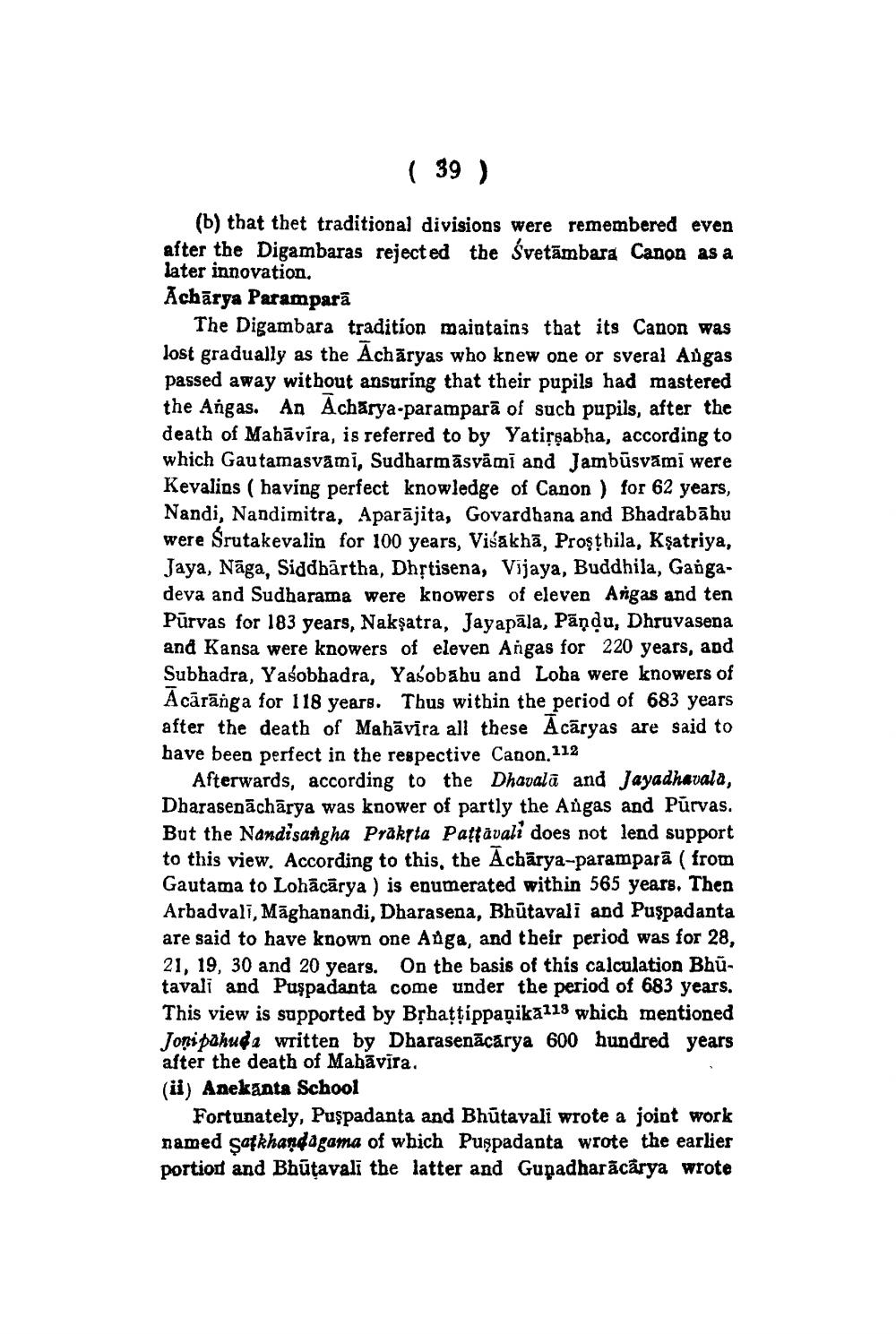________________
( 39 )
(b) that thet traditional divisions were remembered even after the Digambaras rejected the Svetāmbara Canon as a later innovation. Achārya Paramparā
The Digambara tradition maintains that its Canon was lost gradually as the Achāryas who knew one or sveral Augas passed away without ansuring that their pupils had mastered the Angas. An Acharya.paramparā of such pupils, after the death of Mahāvira, is referred to by Yatirsabha, according to which Gautamasvami, Sudharmāsyāmi and Jambūsvāmi were Kevalins (having perfect knowledge of Canon ) for 62 years, Nandi, Nandimitra, Aparājita, Govardhana and Bhadrabāhu were Srutakevalin for 100 years, Visakhā, Proşthila, Kşatriya, Jaya, Nāga, Siddhārtha, Dhștisena, Vijaya, Buddhila, Gangadeva and Sudharama were knowers of eleven Angas and ten Pūrvas for 183 years, Nakşatra, Jayapāla, Pāņdu, Dhruvasena and Kansa were knowers of eleven Angas for 220 years, and Subhadra, Yaśobhadra, Yaśobabu and Loha were knowers of Acārānga for 118 years. Thus within the period of 683 years after the death of Mahāvīra all these Acāryas are said to have been perfect in the respective Canon. 112
Afterwards, according to the Dhavala and Jayadhavala, Dharasenāchārya was knower of partly the Augas and Pūrvas. But the Nandisangha Prākta Pattavali does not lead support to this view. According to this, the Acbārya-paramparā (from Gautama to Lohācārya ) is enumerated within 565 years. Then Arbadvali, Māghanandi, Dharasena, Bhutavali and Puspadanta are said to have known one Anga, and their period was for 28, 21, 19, 30 and 20 years. On the basis of this calculation Bhütavali and Puşpadanta come under the period of 683 years. This view is supported by Brhattippanika118 which mentioned Joni pahuda written by Dharasenācārya 600 hundred years after the death of Mahāvira. (ii) Anekanta School
Fortunately, Puşpadanta and Bhūtayali wrote a joint work named safkhanda gama of which Puşpadanta wrote the earlier portiod and Bhūtavali the latter and Gupadharācārya wrote




